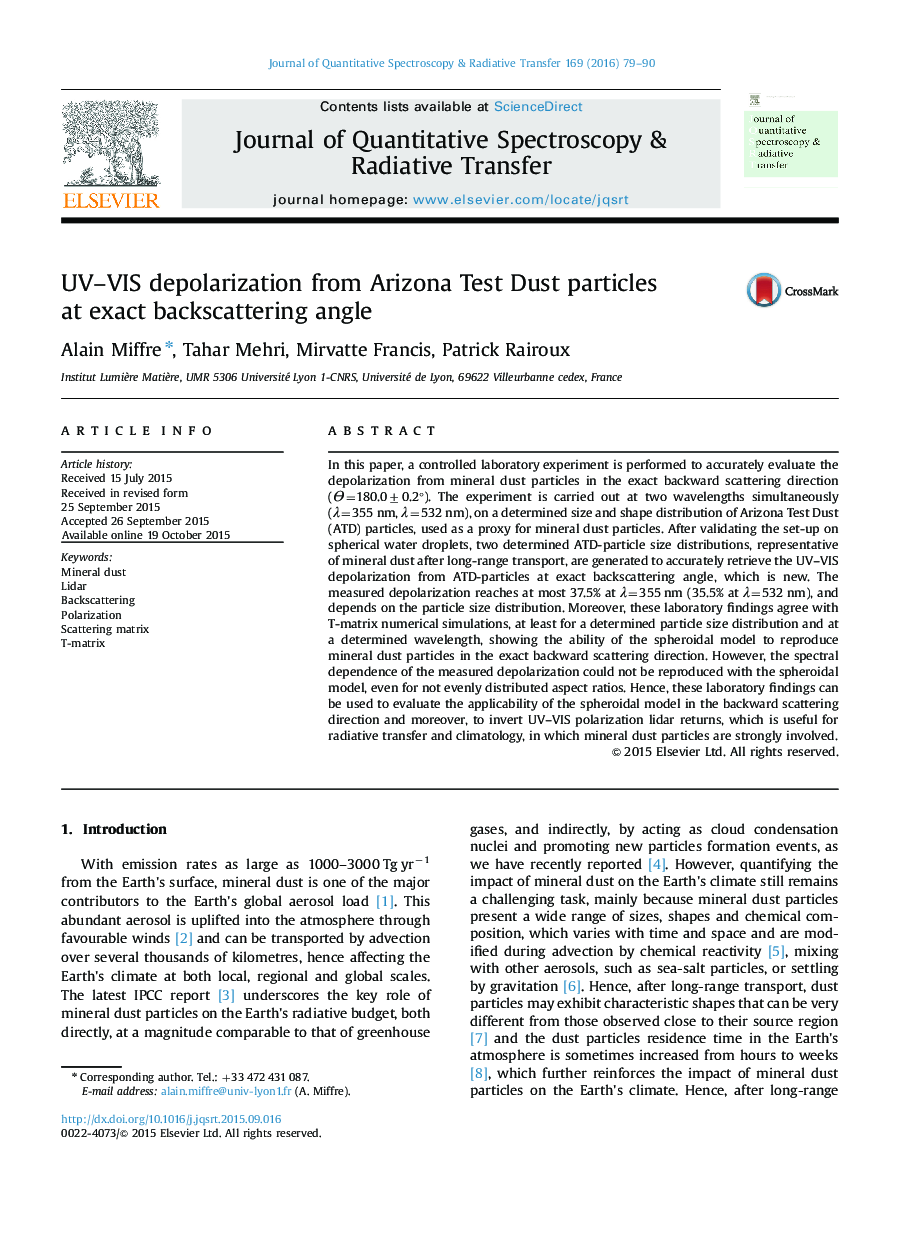| کد مقاله | کد نشریه | سال انتشار | مقاله انگلیسی | نسخه تمام متن |
|---|---|---|---|---|
| 5427845 | 1508646 | 2016 | 12 صفحه PDF | دانلود رایگان |

- The depolarization from dust particles is measured at exact backscattering angle.
- Depolarization ratios reach at most 37.5% at λ=355 nm (35.5% at λ=532 nm).
- At a given wavelength, the measured depolarization agrees with T-matrix code.
- These laboratory findings can be used to invert UV-vis polarization lidar data.
In this paper, a controlled laboratory experiment is performed to accurately evaluate the depolarization from mineral dust particles in the exact backward scattering direction (ϴ=180.0±0.2°). The experiment is carried out at two wavelengths simultaneously (λ=355 nm, λ=532 nm), on a determined size and shape distribution of Arizona Test Dust (ATD) particles, used as a proxy for mineral dust particles. After validating the set-up on spherical water droplets, two determined ATD-particle size distributions, representative of mineral dust after long-range transport, are generated to accurately retrieve the UV-VIS depolarization from ATD-particles at exact backscattering angle, which is new. The measured depolarization reaches at most 37.5% at λ=355 nm (35.5% at λ=532 nm), and depends on the particle size distribution. Moreover, these laboratory findings agree with T-matrix numerical simulations, at least for a determined particle size distribution and at a determined wavelength, showing the ability of the spheroidal model to reproduce mineral dust particles in the exact backward scattering direction. However, the spectral dependence of the measured depolarization could not be reproduced with the spheroidal model, even for not evenly distributed aspect ratios. Hence, these laboratory findings can be used to evaluate the applicability of the spheroidal model in the backward scattering direction and moreover, to invert UV-VIS polarization lidar returns, which is useful for radiative transfer and climatology, in which mineral dust particles are strongly involved.
Journal: Journal of Quantitative Spectroscopy and Radiative Transfer - Volume 169, January 2016, Pages 79-90